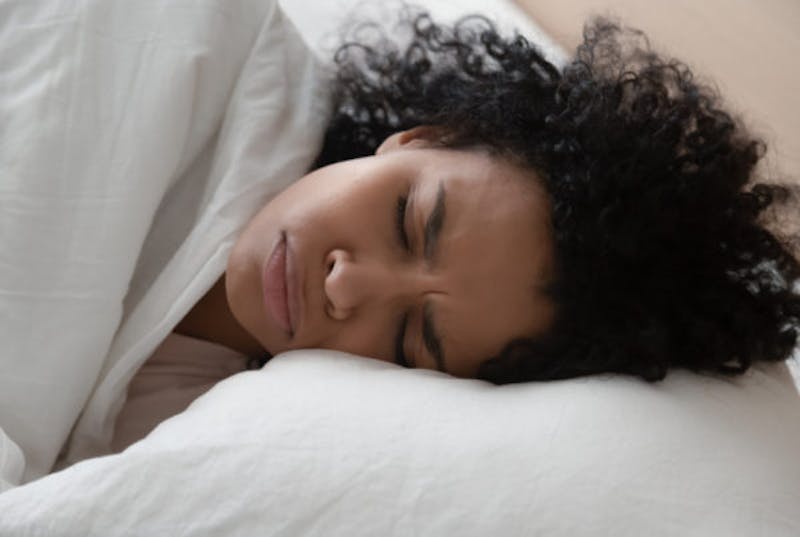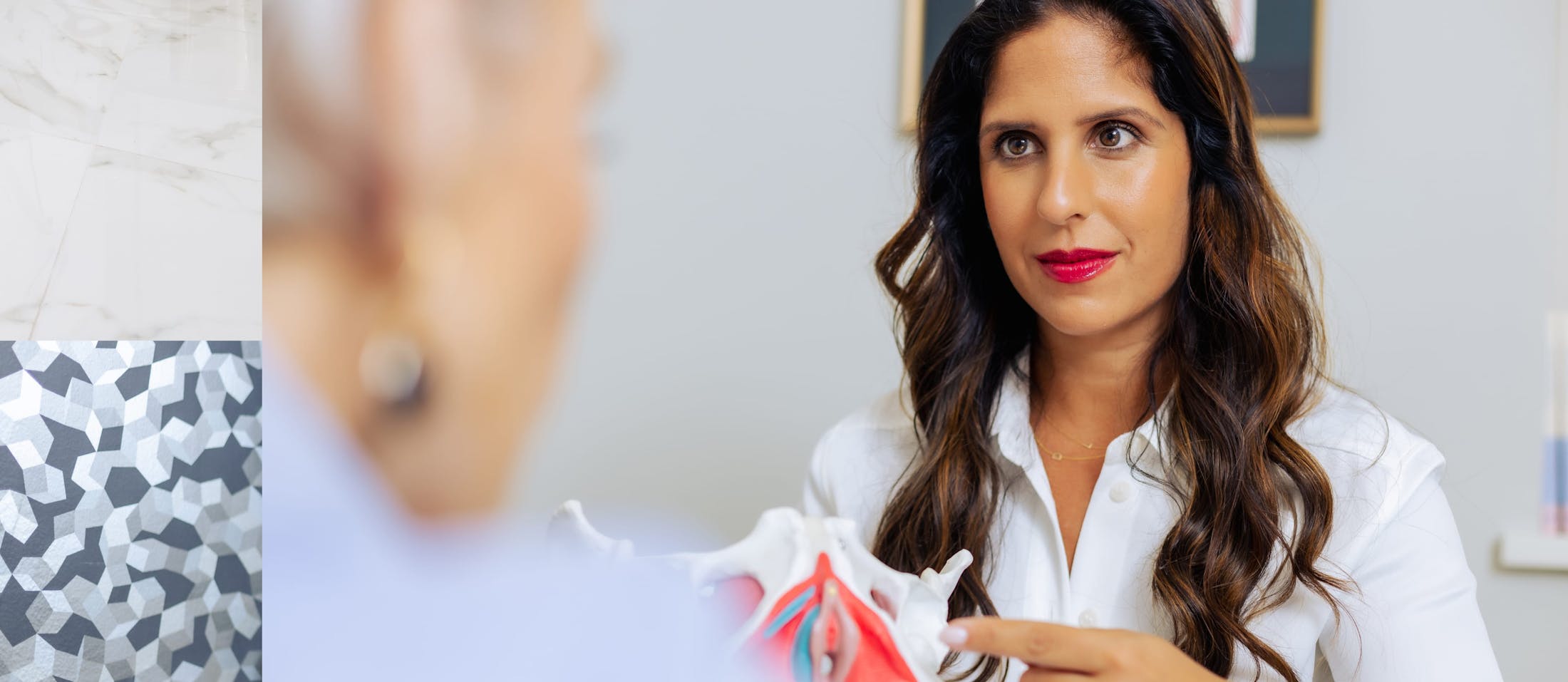
You obviously notice when something’s different about your health. Abdominal or pelvic pain, a shift in your menstrual cycle, pain in other areas of the body. We all know that these can happen for a number of reasons. But what if you’re experiencing severe pain or cramping? Trust yourself if your intuition says something’s off. Increased pain in the pelvic area or elsewhere can be one of the first signs of endometriosis. Keep reading to learn more on what are the first signs of endometriosis
So, what is endometriosis? Here, Dr. Sonia Bahlani will uncover what you need to know about this challenging pelvic issue. We’ll talk about:
What is endometriosis Initial signs and symptoms of presentationPossible causes/theoriesDown-stream effectsTreatmentPrevention
Table of Contents
What is Endometriosis?First Signs of Endometriosis PresentationWhat Causes Endometriosis?Downstream Effects of EndometriosisHow To Treat EndometriosisHow Do I Prevent Endometriosis?
What is Endometriosis?
Simply put, endometriosis is when tissue similar to the uterine lining is found outside the uterus in other parts of the body. This tissue goes through the usual process of thickening, breaking down and shedding like uterine tissue normally would in the uterus. But when this process happens in other organs, it doesn’t have anywhere to go. So instead of shedding and exiting through your vagina during your period, this endometrial tissue becomes trapped. In the United States, about 10% of women suffer with endometriosis and it typically affects women between the ages of 25-35.
Because endometriosis is tissue that is similar to uterine cells but not exactly, this health issue can occur when a uterus isn’t present in the body. Endometriosis can happen to those without a uterus, to those who don’t have periods, and it is not exclusive to women; although extremely rare, it can also occur in men. However, for the purposes of this post, we focus on endometriosis affecting women.
If we break it down, there are three types of endometriosis, depending on where it’s happening:
Superficial peritoneal lesions: This is the most common type of endometriosis. It’s when the endometrial cells grow in the peritoneum — the thin lining of your pelvic cavity.
Endometrioma: These endometrial cells form cysts that grow deep in ovaries and can damage healthy ovarian tissue. This type is the most challenging to treat or manage.
Deeply infiltrating endometriosis: When endometrium grows under the peritoneum — near or on other organs like your bowels or bladder. About 1%-5% of women with endometriosis have this kind.
First Signs of Endometriosis Presentation
An unusually painful period is not the only symptom of endometriosis. Some women don’t experience this tell-tale sign at all. And at times, the level of pain depends on where the uterine-like tissue is growing and how much. So with that in mind, consider if you have these other early symptoms of endometriosis:
Pain when urinating or having a bowel movementBlood in your urine or stoolsPain during or after sexExcessive bleeding during your periodExcessive bleeding between your periodsBack pain during your periodGastrointestinal issues like diarrhea, constipation, nausea or bloatingNausea or vomitingDifficulty getting pregnantFatigue
If you’re experiencing any of these initial signs, we encourage you to make an appointment with a pelvic pain specialist like Dr. Bahlani. At Pelvic Pain Doc, we want you to have the best pelvic and overall health possible and early diagnosis is key to treating and managing endometriosis. We can work together to not only lessen the effects and symptoms, but also help prevent endometriosis from disrupting your life even more.
An examination by your pelvic pain specialist can also uncover the possibility that your symptoms are because of another issue, or perhaps a concurrent one. Endometriosis can sometimes be confused with irritable bowel syndrome (IBS), pelvic inflammatory disease (PID), or ovarian cysts.
What Causes Endometriosis?
The exact causes of endometriosis are still unknown but some of the reasons might be:
Retrograde Menstruation – It’s possible that menstrual blood flows back into the fallopian tubes instead of out the vagina during menstruation. In this case, endometrial cells stick to your pelvic walls and possibly other pelvic organs where they grow, thicken and bleed over many menstrual cycles.
Cell Transformations – With this, two possibilities exist: One, hormones change peritoneal cells — the cells that line your abdomen’s inner side — into endometrial cells. The other possibility is that hormones or immune disorders transform embryonic cells into endometrial cells during puberty.
Lymphatic System Transport – This is when blood vessels or your lymphatic system carry endometrial cells to other parts of your body.
Immune System Disorders – With a compromised immune system, it’s possible that endometrium cells end up growing in abnormal places. That, or your body can’t recognize this endometrial tissue and begin to attack it.
Scar Tissue – If you’ve had major pelvic surgery like a C-section or hysterectomy, endometrial cells can implant themselves into the scar tissue or leak out of the scar tissue into the pelvic cavity.
Downstream Effects of Endometriosis
If you know someone who has endometriosis, you might have witnessed how incredibly difficult it is and how much it affects someone’s quality of life. And as with many health conditions, endometriosis can lead to other complications like:
Ovarian cysts – Cysts can form when endometrial tissue has made its way to the ovaries.
Scarring within organs – Endometriosis can cause inflammation in the affected organs. Your body responds to the inflammation by forming scar tissue during the healing process. This scarring can prevent blood flow to the surrounding tissue.
Infertility – About ½ to a ⅓ of women with endometriosis have difficulty getting pregnant. Endometriosis can affect fertility in two ways: It can block the fallopian tube and prevent an egg and sperm from uniting. Less common, the tissue can directly damage the sperm or egg.
Cancer – If you have endometriosis, the risk of ovarian cancer is higher but is still relatively low. Even more rare is endometriosis-associated adenocarcinoma, which can happen later in life and is cancer in glandular organs.
Mental Health Effects – It goes without saying that endometriosis and its possible effects can challenge your mental health; some women experience depression or anxiety because of it. If this sounds like you, we at Pelvic Pain Doc want to help you with your mental health as much as your physical health. You can feel comfortable having honest conversations with Dr. Bahlani about your mental wellness; we can offer suggestions for medication, therapies and self-care.
How To Treat Endometriosis
Let’s get to the million-dollar question: does endometriosis have a cure? A complete endometriosis cure hasn’t arrived yet, but, thankfully, there are many options for minimizing its symptoms and managing its effects. It’s definitely possible to have endometriosis and go about your life with as little disruption as possible. That’s where Dr. Bahlani comes in! The most important thing you can do is get a diagnosis as early as possible.
At Pelvic Pain Doc, our approach is a holistic one — not only do we examine and diagnose, we’re here to help you talk openly about how your pelvic issues affect your life. Above all else, we want to help you live your life to the fullest. When you sit down with Dr. Bahlani at our New York office or connect for a virtual appointment, we’ll look at factors like your age, your symptoms, whether or not you want to get pregnant, or if you are open to surgery. Once we have the whole picture, we’ll work together to come up with a treatment that works for you.
Treatments range from over-the-counter pain medications and at-home care for mild symptoms, to hormone therapy, contraceptives, or prescription medications for more serious cases. In certain cases, your pelvic pain specialist might suggest surgery.
How Do I Prevent Endometriosis?
Unfortunately, you can’t fully prevent endometriosis at this point. But if you start noticing early signs of endometriosis, what you can do is work towards lowering your estrogen levels. Higher estrogen levels have been linked with the signs and symptoms of endometriosis. Dr. Bahlani can go over what would work best for your quality of life. And bonus, most of the options contribute to a healthier lifestyle overall!
Some prevention options include:
Birth control medication – contraception like pills, patches or rings help regulate estrogen levels. Regular exercise at least four times a week – lowering your body fat contributes to lowering your estrogen levels. Avoiding large quantities of alcohol – a suggested guideline is no more than one drink a day. Avoiding large quantities of caffeine – studies have shown that more than one caffeinated drink a day can increase your estrogen levels. It’s surprising but even a soda or green tea has enough caffeine to affect your estrogen levels. Making overall changes to your diet – like upping your Omega-3s, reducing your trans fats, eating lots of fruits and veggies and reducing red meat. Fill up on legumes and whole grains, too.
Now that you know what endometriosis is and what are the first signs of endometriosis, if you’re experiencing any early signs, please contact us today. As always, your New York pelvic pain specialist, Dr. Bahlani, is here to help you with all your pelvic pain concerns — including endometriosis — so you can spend less time in pain and more time living your life to the fullest.

